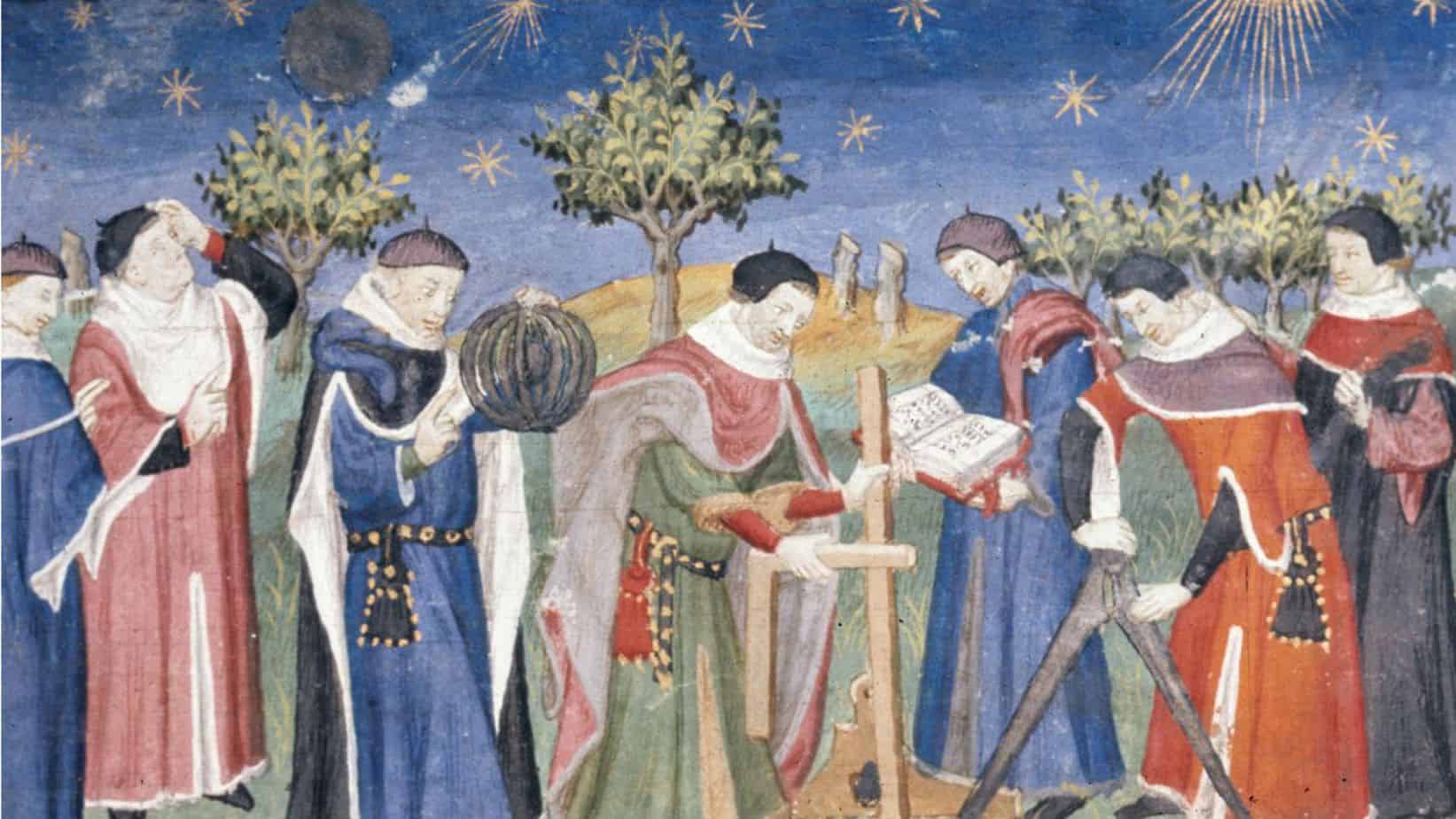In the scientific sense, parallax describes a type of movement. The position or direction of an object seems to differ when viewed from different positions, but the object itself hasn’t changed.
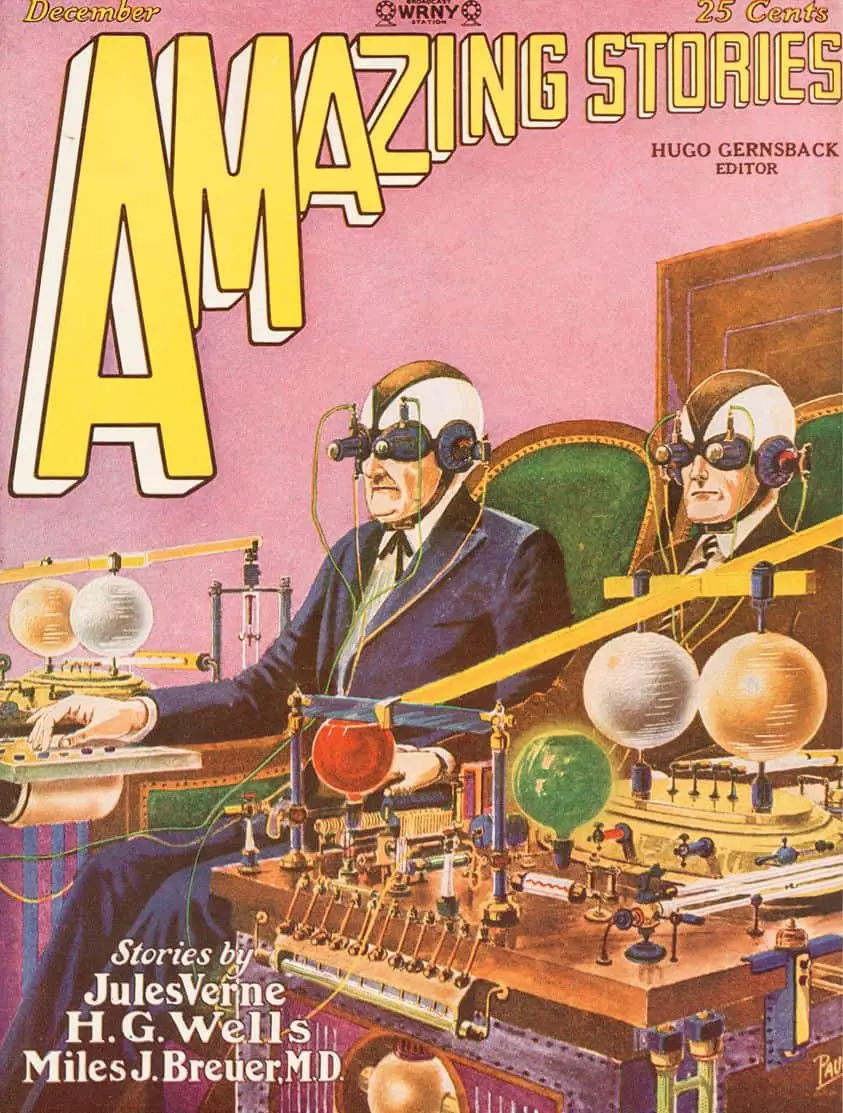
The idea that humans have evolved to see the truth of a situation may not be quite right. A newer, alternative theory from the world of science: Humans have evolved to see an ‘interface’ of the truth rather than the real truth. We are wholly bound by our senses, and none of us sees any objective reality — nor can we even imagine what that might be. Even more terrifying, perception of reality goes extinct.
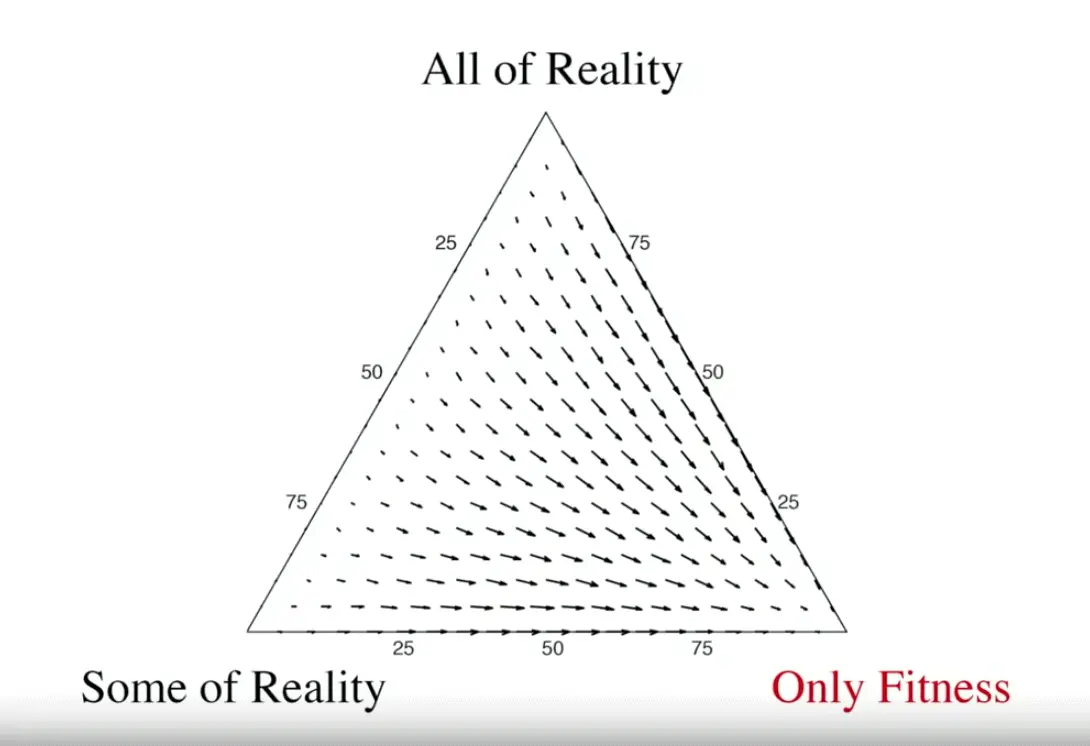
Fitness means the ability to reconstruct a useful reality, or part of reality. More importantly, brains and neurons, according to this theory, are a species specific set of symbols, a hack. Reality is nothing like a brain or neurons, so that reality, whatever it is, is the real source of cause and effect in the world — not brains, not neurons.
The header painting is a Landscape with Clerks Studying Astronomy and Geometry from the early 15th century but no one knows who painted it. This was before astronomers discovered the usefulness of parallax.
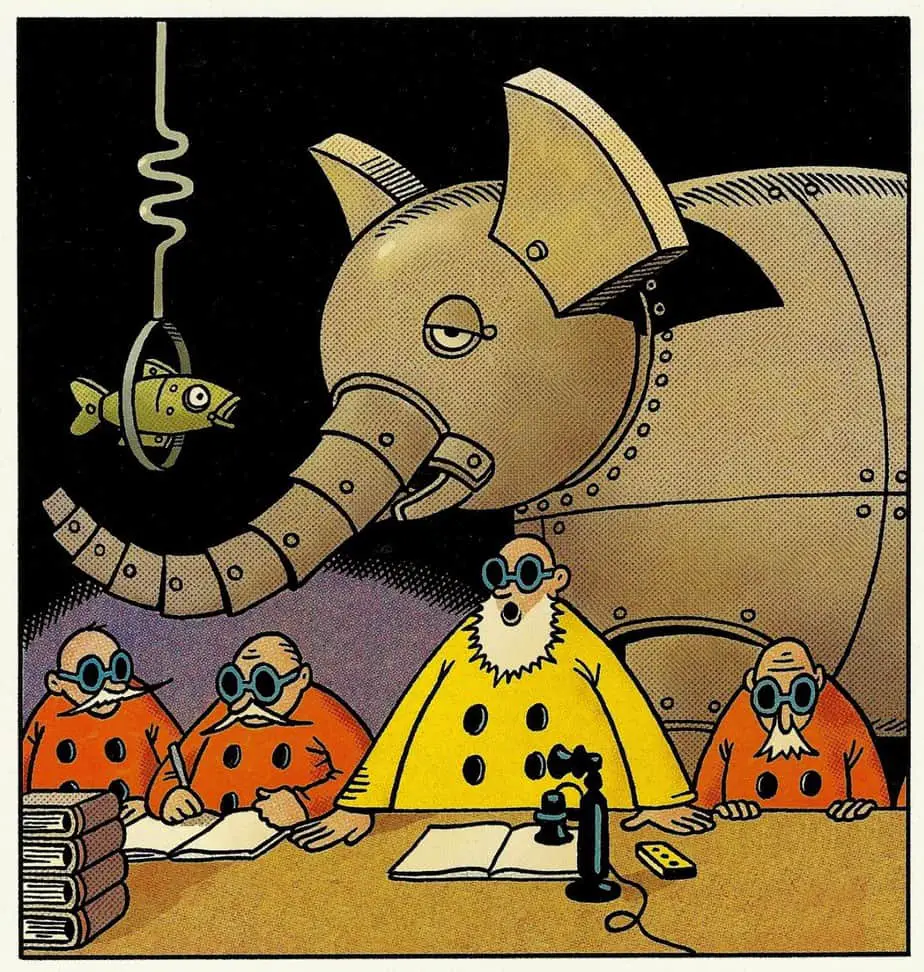
OPTICAL ILLUSION
Parallax is a category of optical illusion. Extend one arm and hold up your thumb. Close first one eye, then the other. The illusion: Your thumb appears to have changed positions, but hasn’t. Your perspective is simply different depending on which eye you’re using.
STELLAR PARALLAX
In astronomy, the angular amount of parallax changes depending on what point in the earth’s orbit you’re seeing it from. Early 1800s astronomers worked out that they could measure distance to stars outside the solar system by viewing the same star from different positions.
PARALLAX IN COMPUTER GAMES
The closer an object is to the viewer, the faster it seems to move.
Many modern computer games make use of parallax to create a more alive and realistic setting.
Another good example of parallax in graphic design can be found at this website. The plants in the foreground are created on a separate layer from the main background.
PARALLAX IN PHILOSOPHY
Actually, philosophers use the phrase ‘response dependence‘ to describe how individuals’ ideas differ depending on our perspective and input. But if there were more terminology overlap between disciplines, someone might have called it parallax.
VARIOUS EXAMPLES OF PARALLAX IN MODERN LITERATURE & STORYTELLING
Scholars of literature sometimes use the word parallax, borrowed from the field of science. Like viewing a star from various places on Earth, a writer can also let readers see a situation from different positions/perspectives.
The word describes a mode of narration. You’ll hear “parallactic narration”, or “narrational parallax”. This refers to: the device or rendering of a story from more than one point of view in variable parallactic focalisation.
RELATED TERM: SIDE-SHADOWING
Parallax is a word that tends to be used by academics and scholars of literature. A word sometimes used by writers: side-shadowing. The technique of side-shadowing can induce a feeling of parallax in the audience. Side-shadowing is when the author creates another scene which doesn’t really happen in the world of the story. For example, a character imagines or dreams something. Or considers ‘what if’. The writer creates an entire scene out of it (usually short, because audience patience is being tested here). The point of side-shadowing is to show what else could have been, which avoids ‘rail thinking’, and the idea that the world is fatalistic. Side-shadowing also elicits the lamentable reality that each of us only gets one life, and each choice we make sends us down a different path, closing off other possibilities. Sometimes these choices are huge but only in hindsight. The life-altering changes happen almost when we don’t notice them. (Short story writers love them.)
In any case, think of side-shadowing as a subcategory of parallactic narration. Mostly, literary parallax makes use of more than one character rather than a single main character thinking of what else could have been.
THAT PARALLACTIC, SIDE-SHADOW FEELING
At her blog, Gretchen Rubin describes the following sensation:
I was reading a description of someone, and it said, “He lives with his wife and children on the Upper East Side of Manhattan.” As I read this line, I had a fleeting yet complete vision of what that life would be like — the life of a person living with his family on the Upper East Side.
But in the next moment, I realized, “Wait, that’s my life, I live in that neighborhood myself, with my family!” Yet the reality of my experience doesn’t at all match my vision of what that “life” would be like. And oddly, my imaginary version seems richer and more real, in a way, than my actual experience.
I realized I can provoke this feeling, just by putting my own experience into words. If I think, “She went to an all-girl school in the Midwest,” I have an idea of what that was like — but I did go to an all-girl school in the Midwest, and it was very different from what my imagination kicks up.
My Imagination and My Reality Don’t Match Up
She then asks if there’s a word for it, and comes up with ‘parallax feeling’. I think it may be related to déjà vu (already seen).
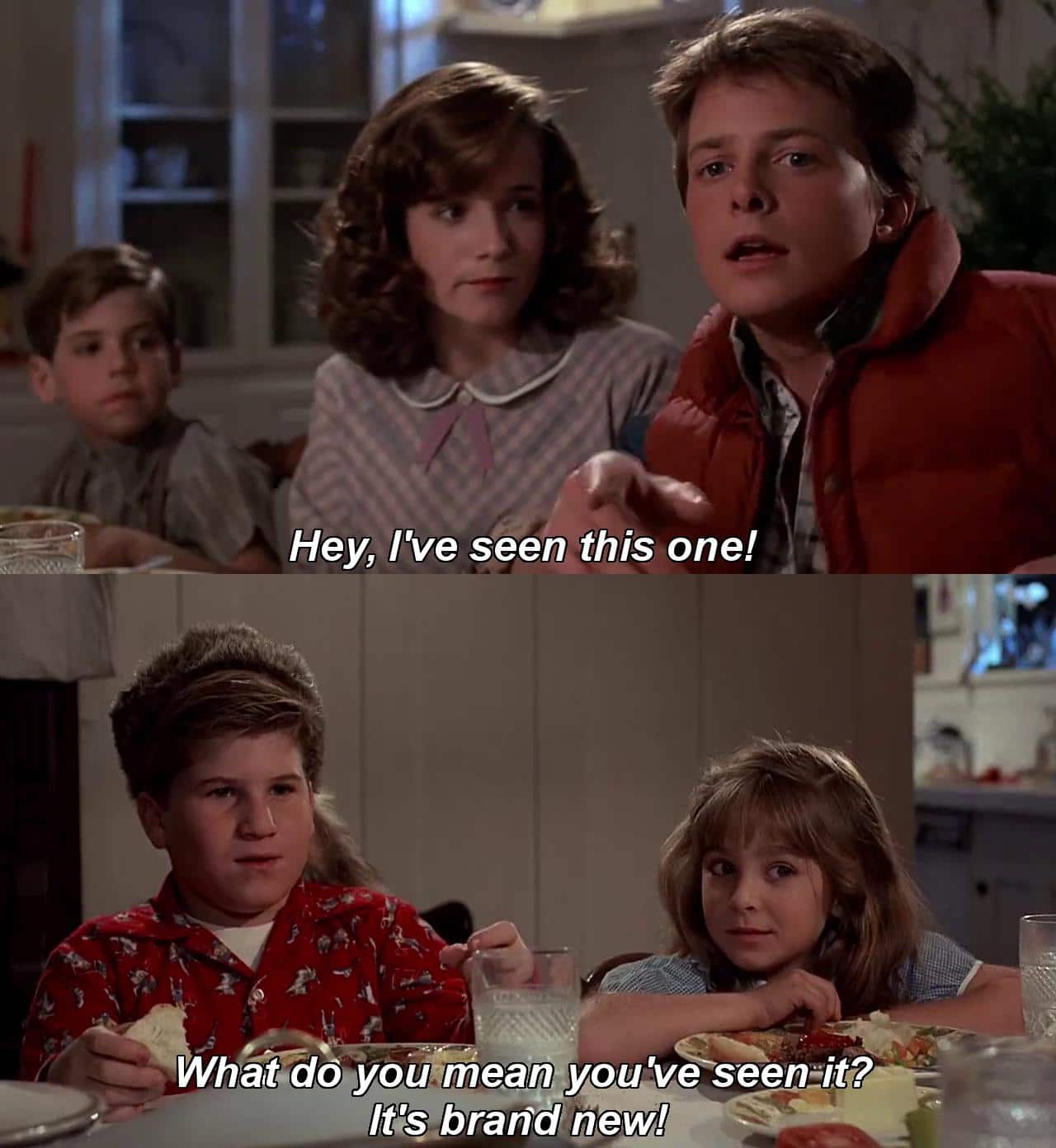
PARALLAX AS DESCENDENT OF METAPHORICAL BLINDNESS IN FAIRYTALE
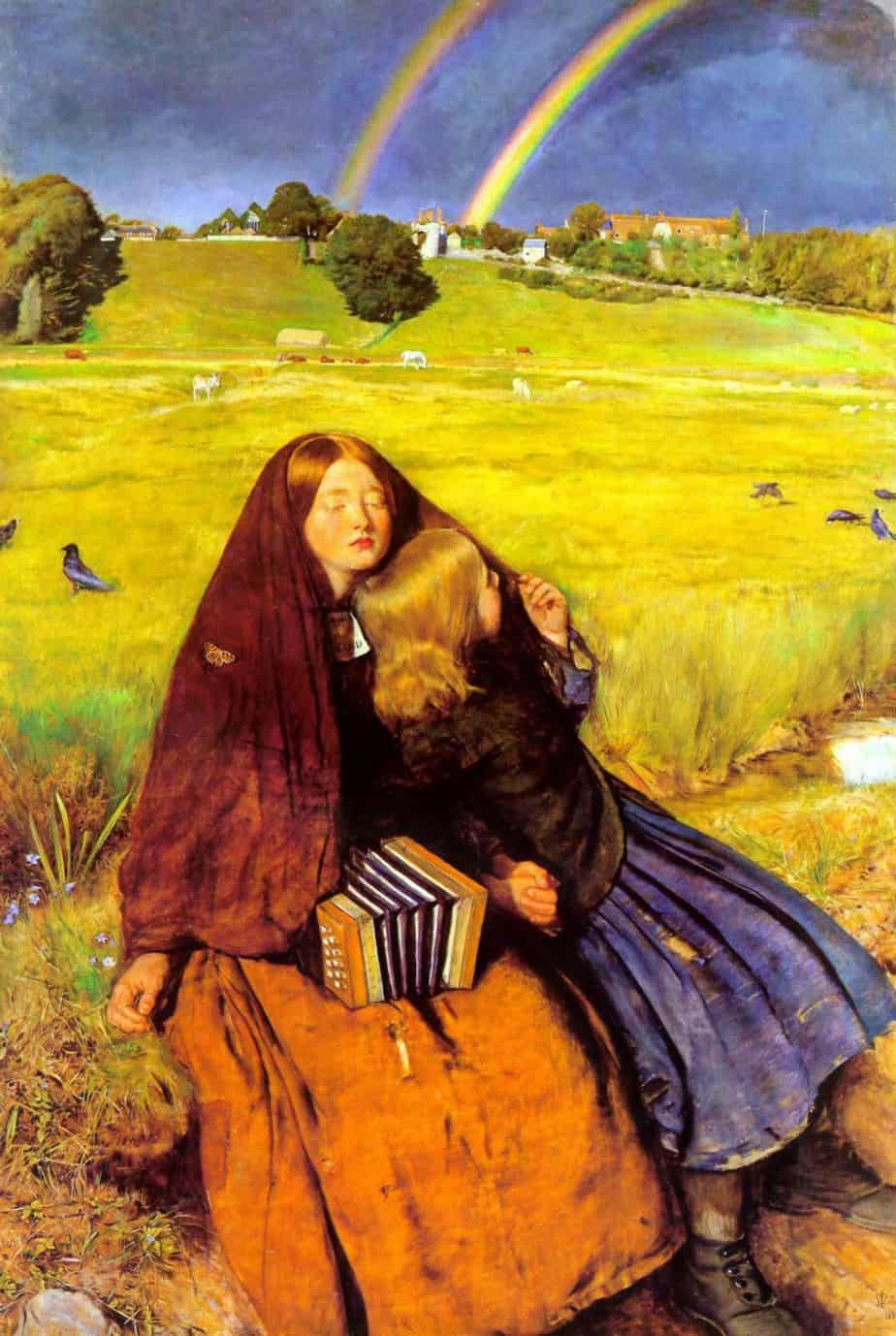
When you can’t see the big picture, your life is going to be worse in some way. In fairy tale, to be blind was a fate worse than death.
Importantly for this discussion, we should treat visual impairment in fairy tales as metaphorical rather than literal. Blindness (and muteness) are states-of-being which, in fairytale, indicate a state of enchantment.
What is ‘enchantment’?
In fairy tales, characters alternate between states of enchantment and disenchantment. Symbols and tropes indicate which state a fairytale character happens to be in at any given time.
For instance, if a heroine on the cusp of puberty is:
- wearing a ragged fur or skin
- abducted by lunar creatures (dragons, werewolves etc.)
- transmogrified into a snake (etc.)
she is in a state of enchantment. She can disenchant herself by:
- shucking off her ragged fur or skin
- escaping from the dragon’s lair
- turning back into a human and having penetrative sex with a man.
- Less intrusively, she might also comb or brush the tangles out of her dishevelled hair.
In non-bowdlerized versions of “Rapunzel“, the wicked witch entices the prince to climb up the rope of Rapunzel’s hair she has lopped off. He climbs up; the witch threatens to scratch out his eyes. Next, he falls onto thorns and is blinded anyway, by the thorns. In a fairytale world, blindness is a fate worse than death. A blinded character has lost their most vital sense. Yet they don’t even enjoy the consolation of Heaven, which they’d have if they were dead.
However, in fairytale blindness is reversible. Rapunzel escapes the tower and finds her prince in the wilderness. Her tears fall upon his eyes and his eyesight is restored. This part of the story maps onto the Anagnorisis phase of contemporary storytelling.
Note that anagnorisis exists on a continuum. Revelations can be partial. Or, revelations can be complete, then immediately sublimated by the person who doesn’t want to see. (Katherine Mansfield was well-known for this.)
SIGHT, TRUTH AND IRONY IN CHILDREN’S LITERATURE
Irony is at the heart of parallactic narration. I mean irony in its broadest sense: A meaningful gap between expectation and outcome. We expect a character in a story to see what’s going on before their eyes. Often they don’t. But we see it for them. When we know more than our characters do, we call this narrative irony.
All readers are trained from a young age in picking up this kind of irony. The stand-out picture book example oft-cited by academics: Rosie’s Walk. Rosie’s Walk was a game changer for picture books.
Blind Mistake, according to TV Tropes “is when a character makes some kind of error to do with their surroundings simply because they lack sight, either permanently or due to Temporary Blindness, or have misplaced their glasses.” Ergo, characters who can’t see what’s going on all around them make for comedy fodder.
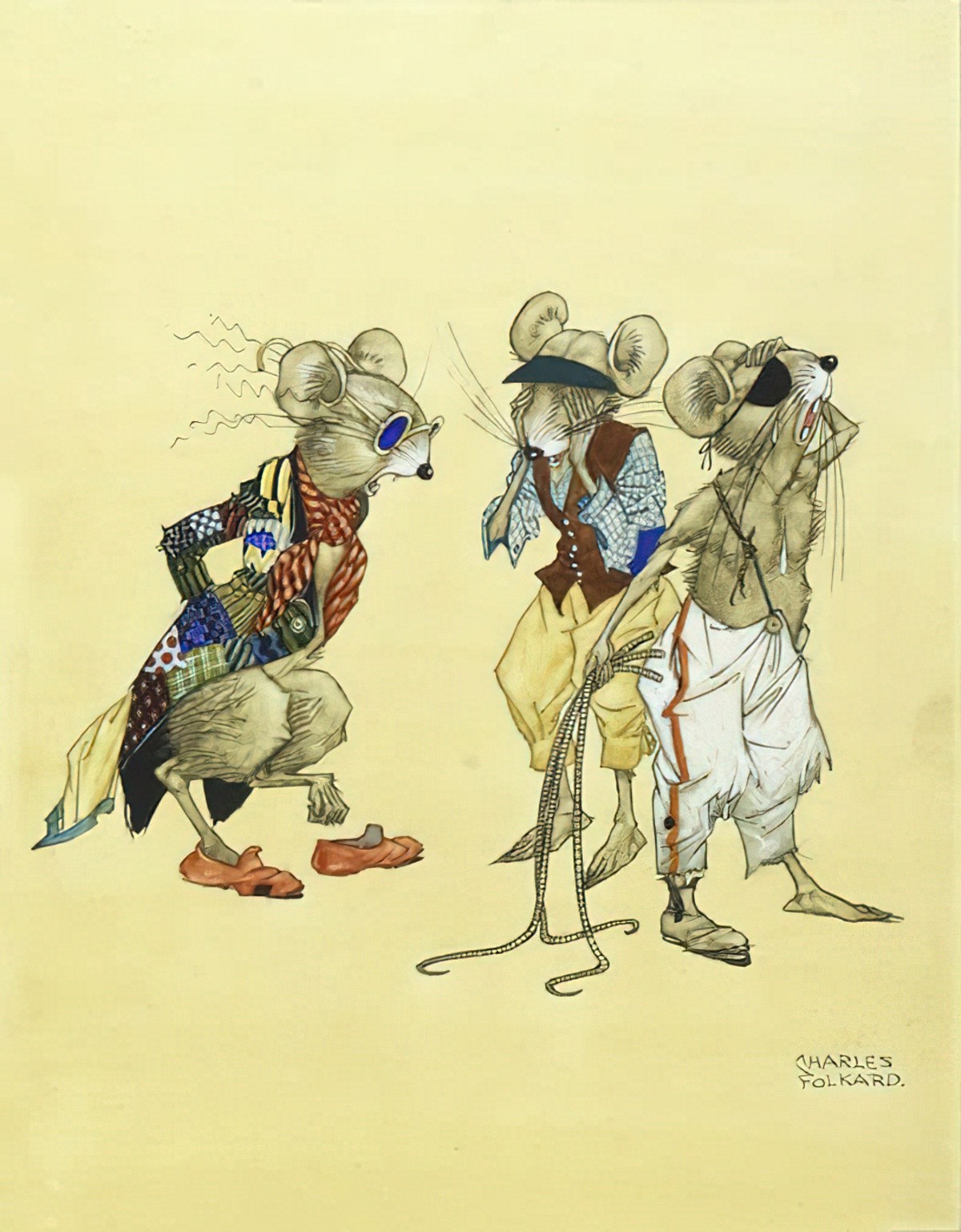
- Muriel of Courage The Cowardly Dog
- “The Three Blind Mice” (a darkly comic nursery rhyme)
- Mr Magoo
- Arthur’s Eyes by Marc Brown — the story which explains how Arthur gets his glasses is ideologically problematic because the most egregious mistake he makes is walking into the girls’ bathroom by accident.
ROSIE’S WALK BY PAT HUTCHINS (1967)
The fox of Rosie’s Walk doesn’t contradict what’s happening in the words, but creates an extra dimension. This enables the reader to feel as if they are being let in on a secret. The reader is being asked to contribute to the experience of the story — the reading process is no longer entirely passive. Even if the child has not yet developed the capacity to read, they’ll be reading with someone else saying the words. They could read it by themselves as pictures and they’d still get a story, but if someone is reading it, that’s a slightly different story. The textual narrator is as blind as Rosie. Rosie is oblivious to the fox. So it’s a kind of pantomime: ‘Look out! He’s behind you!’ for the young reader. Either the reader sees something that the writer doesn’t, or they’re being deliberately left out to tease us with a joke, and we’re being invited into a private joke the author is sharing with us. Normally, if you’ve got a fox and a hen the hen doesn’t stand much chance, but this expectation is subverted. [Inverted?]
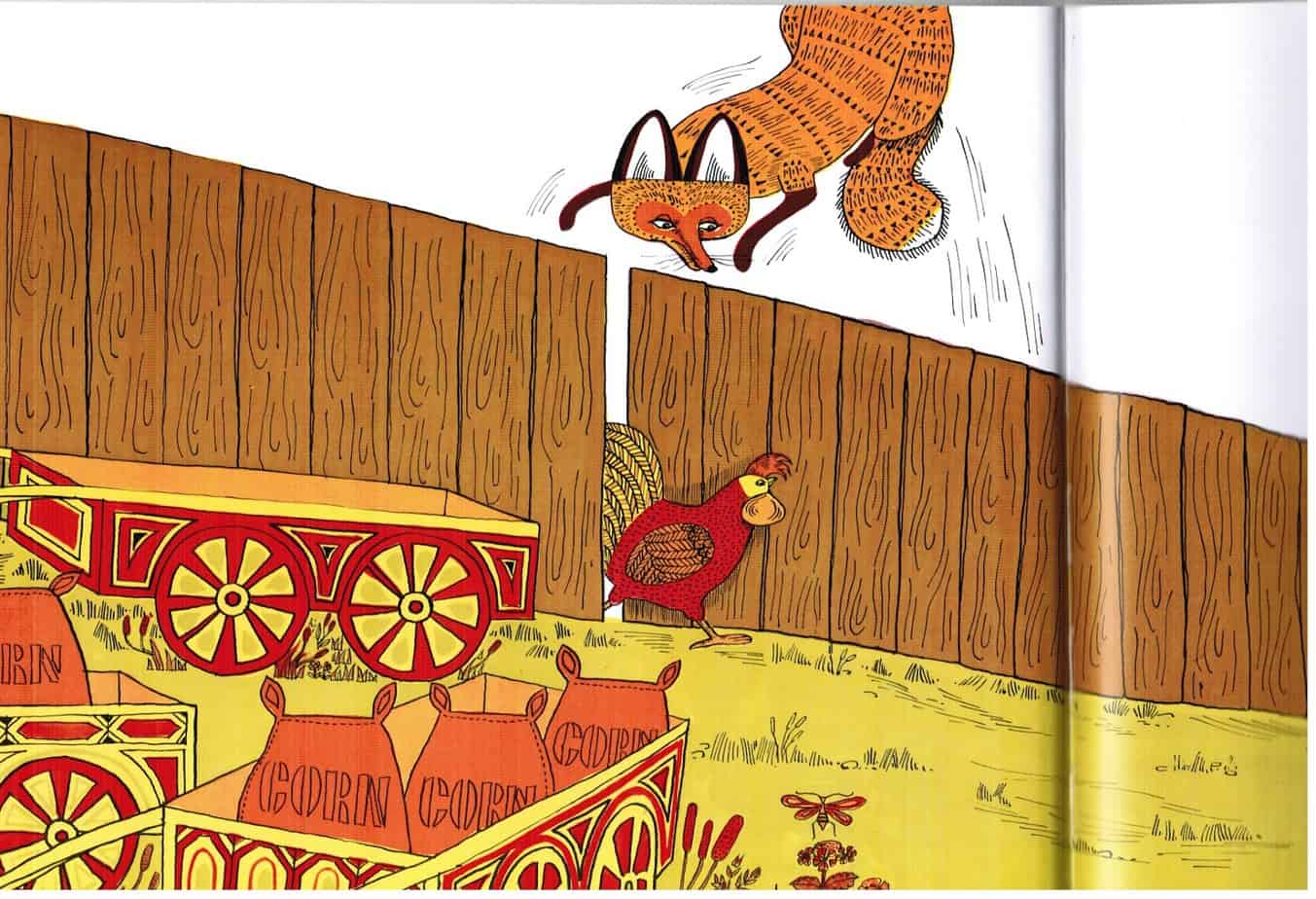
WHERE’S BABY? BY ANNE HUNTER
Let’s go even younger. We train pre-verbal children in object permanence with the category of picture books such as these. Object permanence is from Piaget and refers to the developmental stage when children realise objects continue to exist even though they’re out of sight. (Sometimes, neurodivergent kids take much longer with this particular skill.)
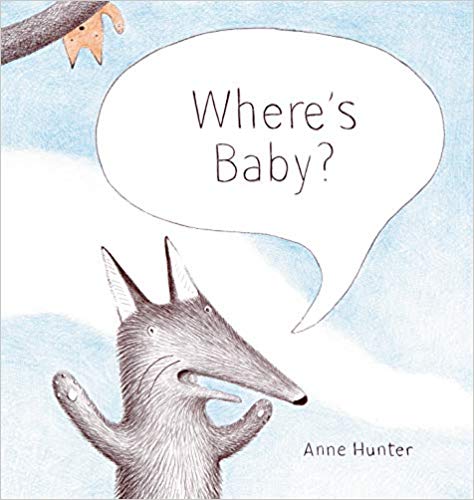
In this clever introduction to prepositions, a near-sighted Papa is looking for his baby. Is Baby up in the tree? Is Baby under the log? Is Baby around the corner? Where could Baby be?
Readers will delight in spotting the little fox on every page as Papa wanders the forest, encountering other animals all along the way, but never quite able to spot his own baby. Anne Hunter’s delicate and lovely illustrations with their limited palette highlight the humor of this adorable hide-and-seek tale.
WONDER BY R.J. PALACIO
Middle grade novels are frequently about truth, and who to trust. Middle grade readers are at a developmental stage where they are learning people lie to get what they want, and that sometimes it is necessary to lie, despite broad advice not to.
The truth of a situation is oftentimes best achieved by alternating points of view.
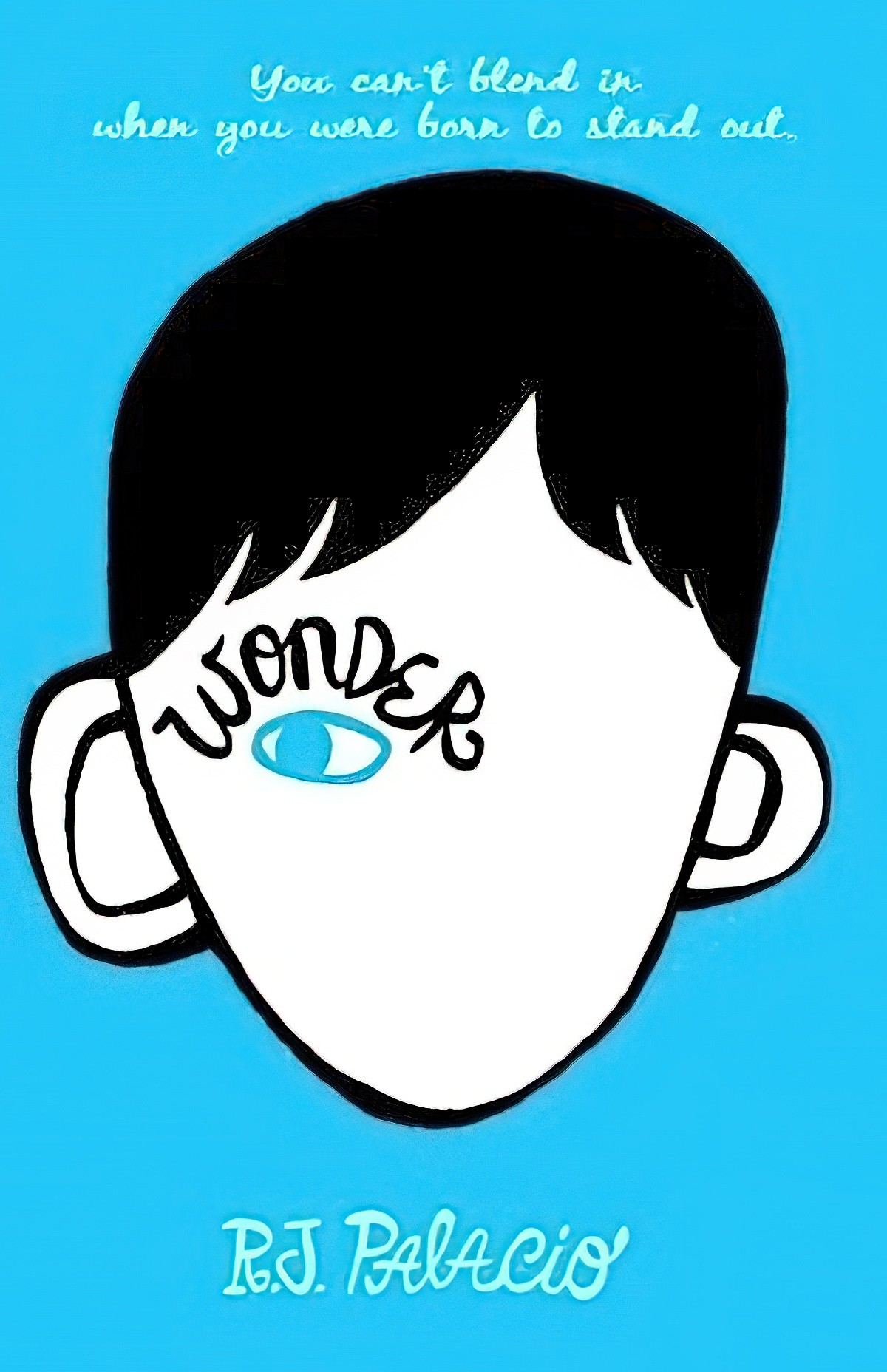
I won’t describe what I look like. Whatever you’re thinking, it’s probably worse.
August Pullman was born with a facial difference that, up until now, has prevented him from going to a mainstream school. Starting 5th grade at Beecher Prep, he wants nothing more than to be treated as an ordinary kid—but his new classmates can’t get past Auggie’s extraordinary face. Wonder begins from Auggie’s point of view, but soon switches to include his classmates, his sister, her boyfriend, and others.
Palacio’s Wonder discusses the issue of disability through different perspectives, namely the deformed face, August, and other characters. The novel is a call and response between August whose deformed face places him in the position of inferior Otherness and other characters whose normality identifies them as the superior Self. This is tackled through the technique of multiple narrative voices.
Bakhtin’s Dialogism: A Study of R.J. Palacio’s Wonder
(There’s another word for ‘otherness’. It’s ‘alterity’.)
The truth which is revealed via a parallactic, alternating POV narrative? That August is not Other. He is very much human, and should be treated as such.
THE TRICKSTERS BY MARGARET MAHY (1986)
Now for a 1980s young adult novel from New Zealand, with a heart in ancient myth and fairytale. In Margaret Mahy’s The Tricksters, Mahy does something a little different with the main character’s short-sightedness. On the beach, when Harry’s wearing her sunglasses instead of her prescription glasses, her blurred vision confers an advantage; she is able to see into a parallel fantasy world. Below, she speaks to a man from the fantasy realm:
“Short-sighted?” Felix said. “You’re seeing something different from me, then?” He looked up into the canopy of bush under which they were walking, as if he were now seeing it differently himself.
“I’ve got used to seeing things a little bit blurred,” Harry said.
“You might even get to prefer it,” he agreed, surprisingly. “I don’t trust sharp edges myself.”
“It’s nothing like that,” Harry said. “I mean, it’s not philosophy, just vanity that makes me try to go without glasses. Sometimes they make me look as if half my face is further off than the other half. I can do without that.”
The Tricksters, Margaret Mahy
Margaret Mahy subverted the metaphorical blindness of fairytale. By not wearing her glasses, the main character is able to see into a parallel dimension.
One short story writer who made much use of parallax is Katherine Mansfield, who largely used it to create irony. Note that Mansfield was a groundbreaking writer in the tradition of Modernism. Parallactic narration is a Modernist thing.
- “Prelude” by Katherine Mansfield is a short story divided into sections, each section with a different focaliser. Each of these focalising characters has a different experience of the world showing that there is no single true experience.
- “How Pearl Button Was Kidnapped” — Mansfield uses parallax by restricting the reader’s knowledge through the prism of a young child character, Pearl. This perspective contrasts with the wider perspective of the narrator, which broadens over the course of the story. This narrator isn’t detached but capable of viewing the scene from a greater distance.
- “Miss Brill” is a similar example from the same author — The character of Miss Brill is a ‘Sunday Wanderer’ archetype whose preoccupied view of the world contrasts seamlessly (and subtly) with that of the detached narrator.
- The best example from Katherine Mansfield is thought to be “The Little Governess”.
FURTHER EXAMPLES OF PARALLACTIC NARRATION FROM SHORT STORIES
- “The Blood of the Conquistadors” is another standout short story example of parallactic narration. Events are seen from the vantage point of eight different characters.
- As I Lay Dying by William Faulkner, a Southern Gothic novel from 1930. Faulkner presents 15 different points of view, each chapter narrated by one character, including Addie, who expresses her thoughts after she has already died.
FRACTURED FAIRYTALES
Readers achieve a parallactic experience when reading fractured fairytales, such as a retelling of “Cinderella” but this time from the viewpoint of the prince, or the ugly step-sister.
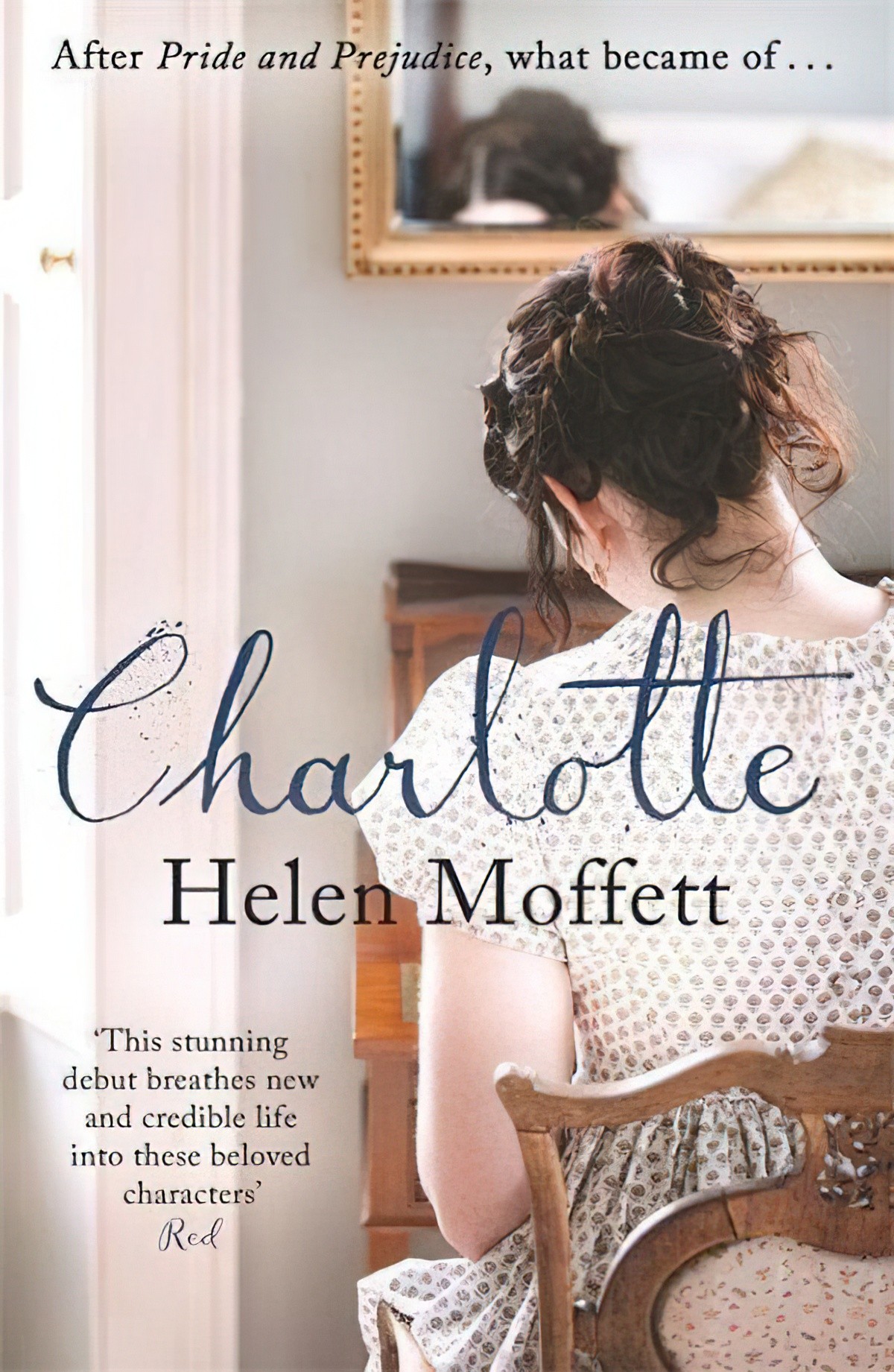
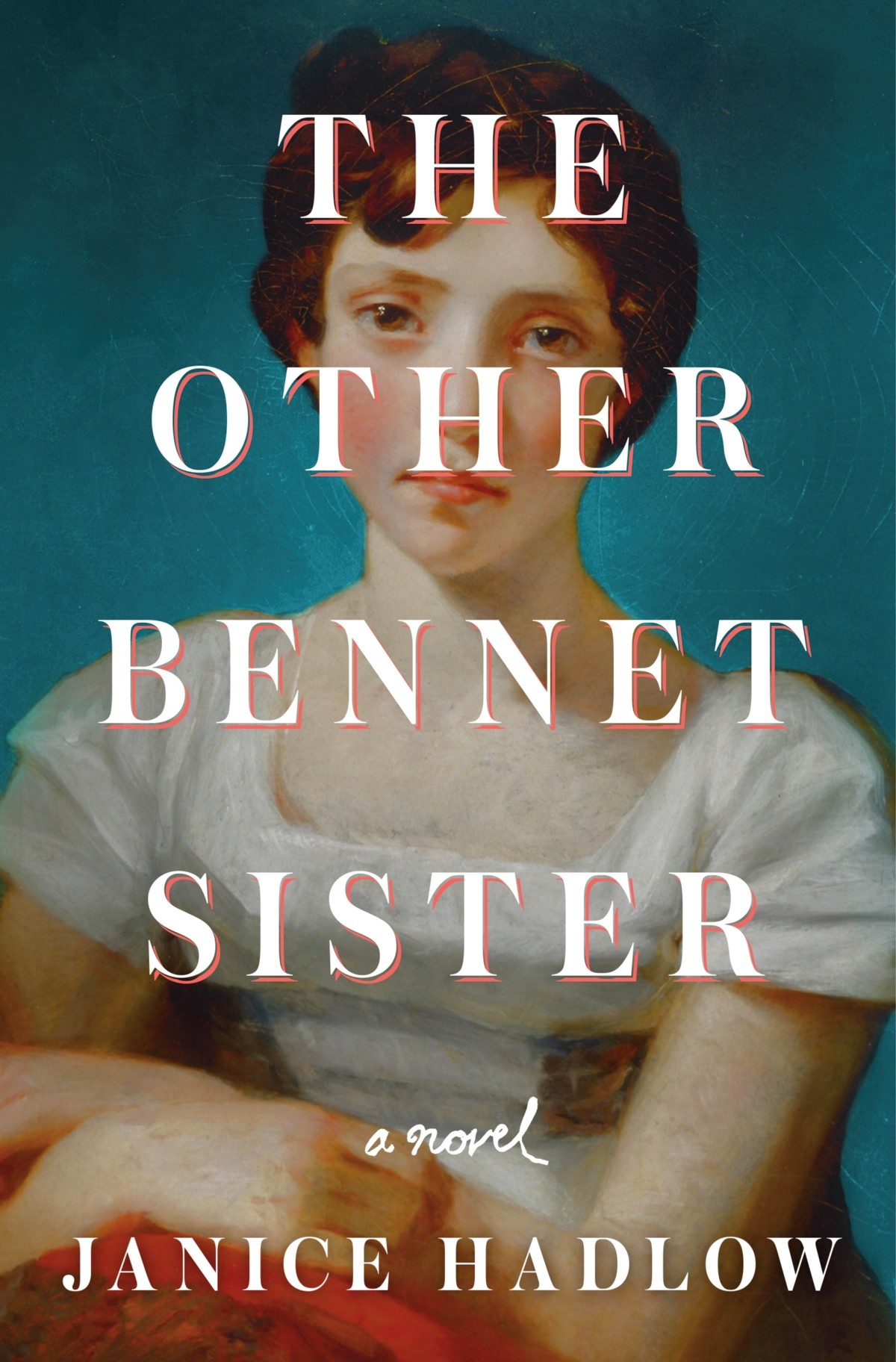
DON’T LOOK NOW (1973)
Let’s look at a couple of films.
Don’t Look Now (Italian: A Venezia… un Dicembre rosso shocking, lit. “In Venice… a shocking red December”) is a 1973 English-language thriller directed by Nicolas Roeg, adapted from the 1971 short story by Daphne du Maurier.
Wikipedia
A married couple grieving the recent death of their young daughter are in Venice when they encounter two elderly sisters, one of whom is psychic and brings a warning from beyond.
logline
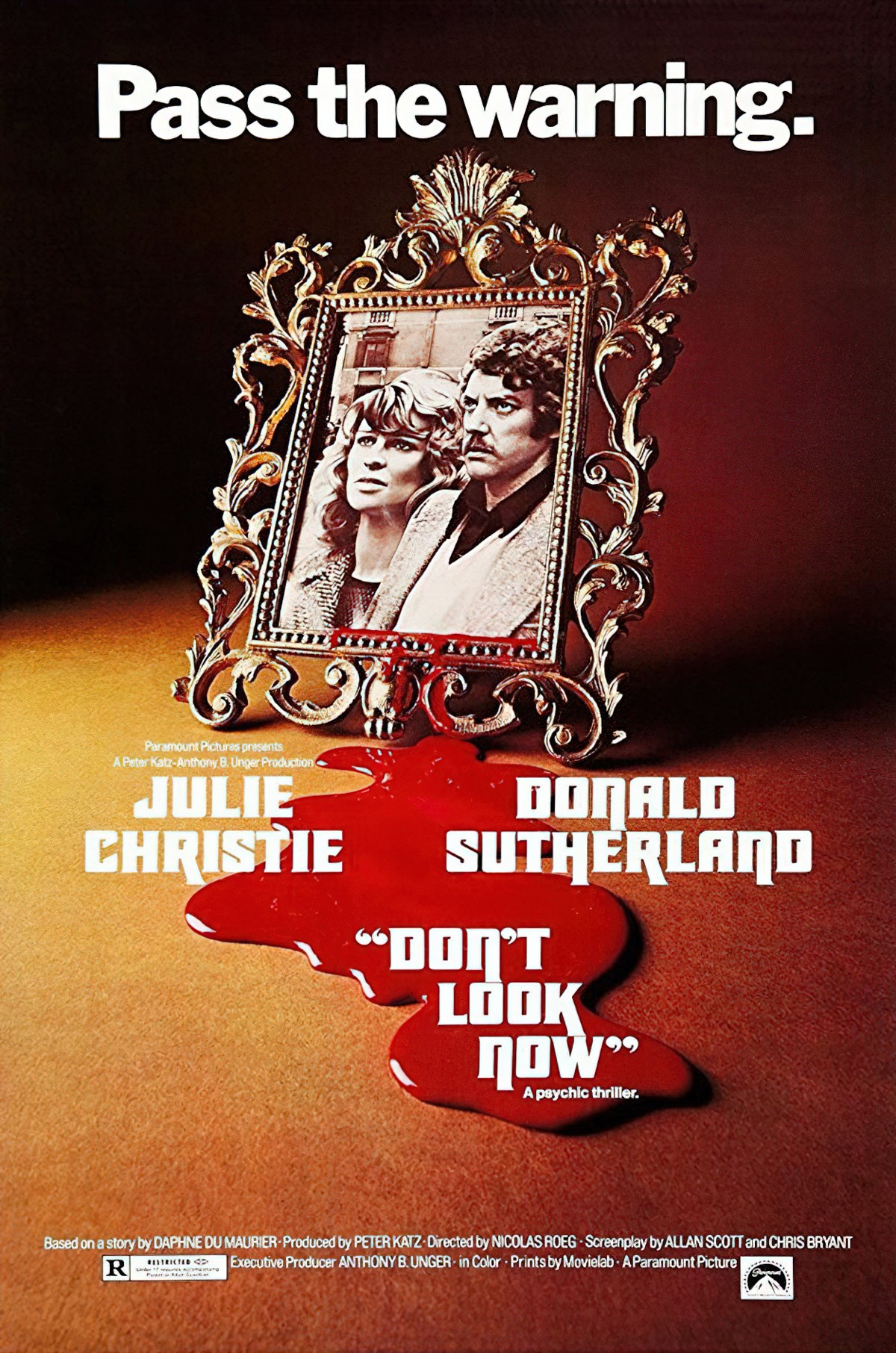
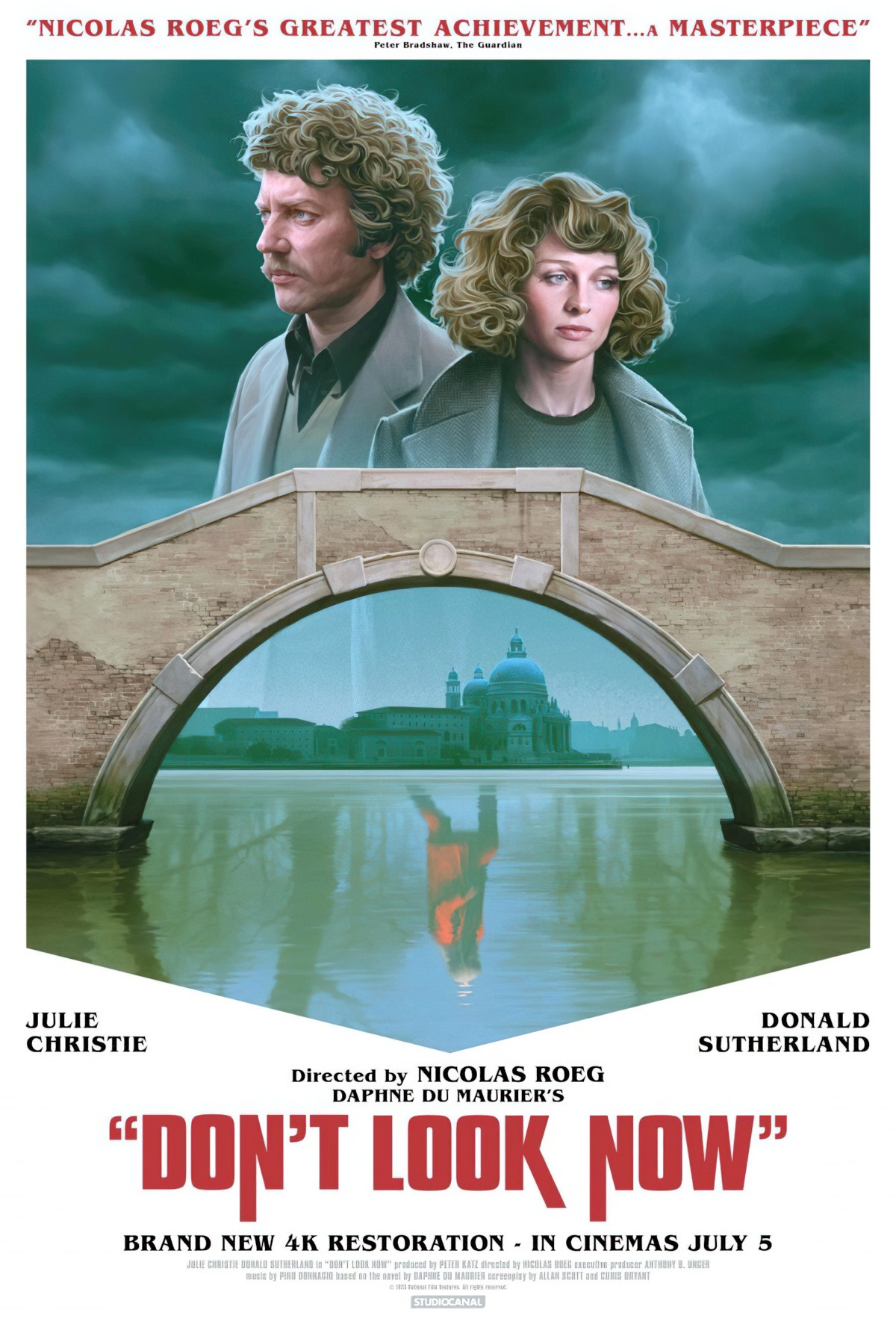
“DON’T LOOK NOW” is a story about vision. The things we see, the things we don’t, the things we see without using our eyes.”
@MerrittMecham
DOUBT (2008)
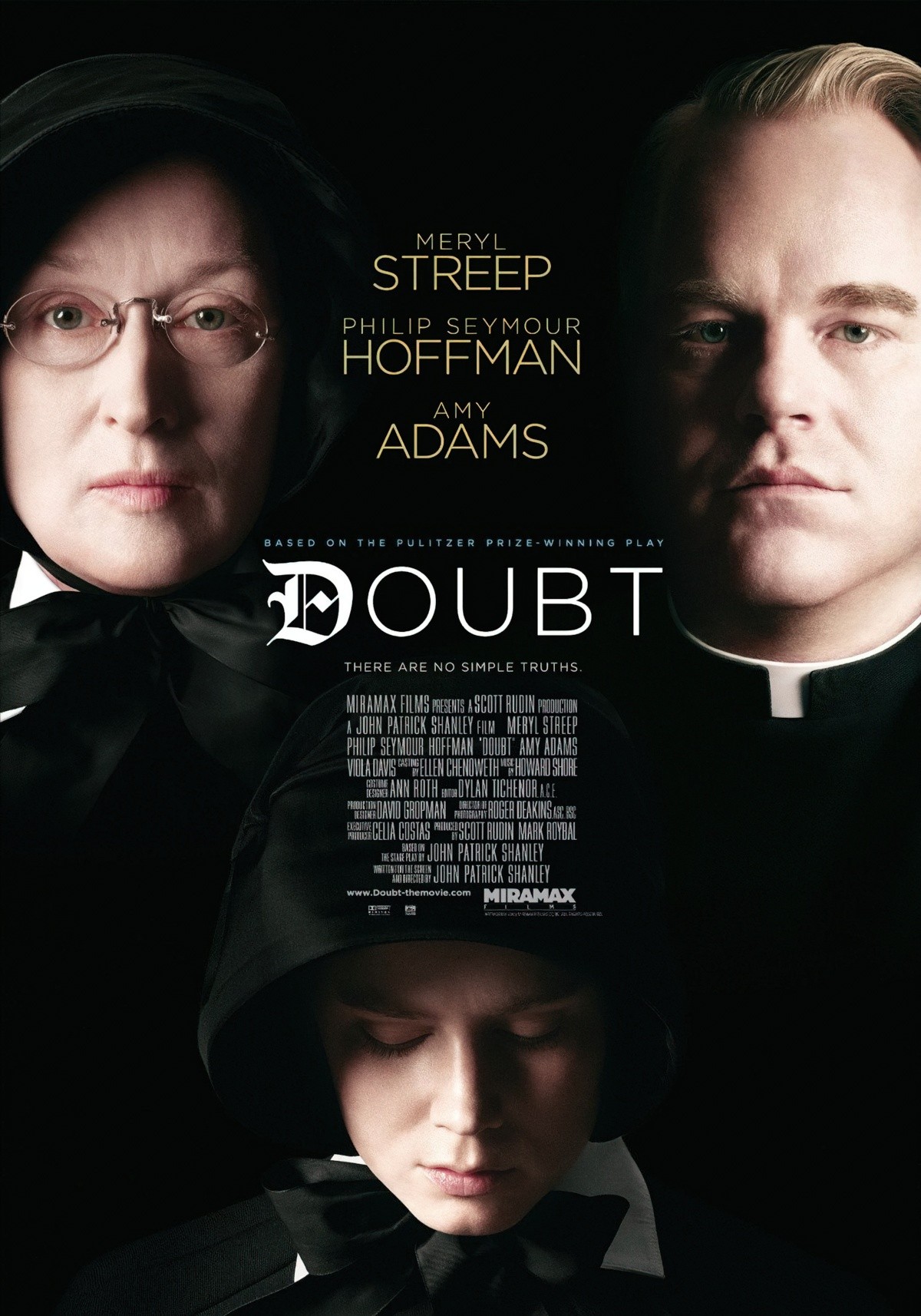
A Catholic school principal questions a priest’s ambiguous relationship with a troubled young student.
logline
Doubt features multiple layers of irony, and three characters who each see a situation in different ways. Father Flynn is grooming a vulnerable student, but doesn’t see his actions as abuse. He only sees it as love. Sister Aloysius is faced with a terrible moral dilemma: She can’t possibly see what may have gone on behind closed doors, and must instead rely on experience, intuition and the vaguest of visual clues. The young Sister James is unable to sit with the cognitive dissonance of believing a friendly, self-described loving and progressive man as a predatory pederast. So she decides to believe Father Flynn when he grooms her, as well as the rest of the community.
A YELLOW RAFT IN BLUE WATER BY MICHAEL DORRIS
I could pick any number of novels to talk about alternating point of view. It’s a very common technique. Parallax is so common, we don’t even use that word.
This one features the motif of a braid. From Wikipedia: ‘The final lines describe Ida pantomiming the action of braiding, symbolizing the intertwining destinies of family.’
I’d like to draw your attention to the word ‘destiny’. Whereas side-shadowing parallax subverts the notion of fate, in this case, alternating point-of-view (another form of parallax) uses a braid to convey a sense of fate via genetic destiny. Parallactic narration takes so many forms, it can be used to convey anything, in fact.
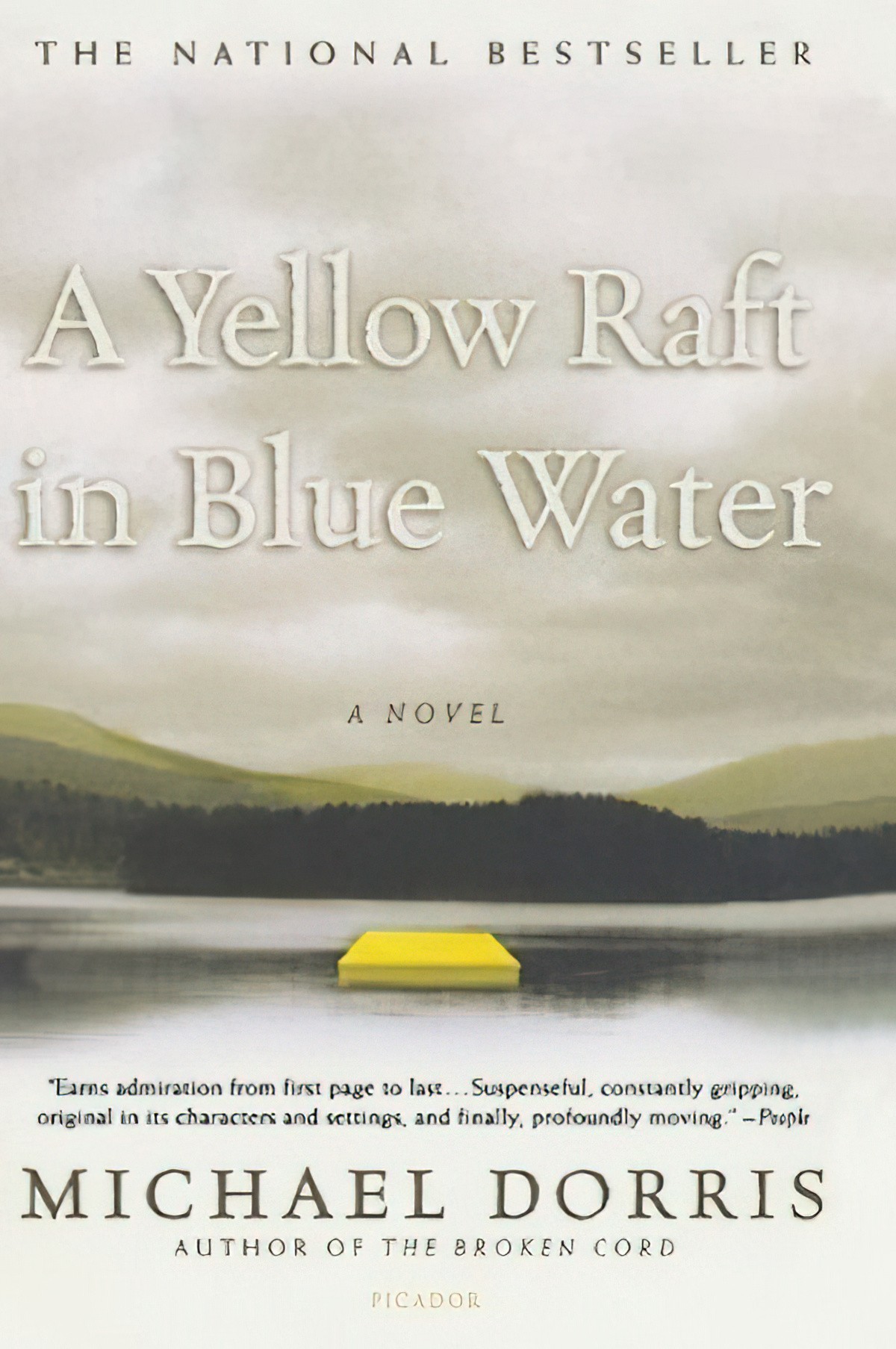
“You know, it’s strange, you live in a place half your life and yet the sight of it from an unfamiliar angle can still surprise you, it was as though I had never before seen that building, so small and hollowed out against the treeless land.”
Michael Dorris has crafted a fierce saga of three generations of Indian women, beset by hardships and torn by angry secrets, yet inextricably joined by the bonds of kinship. Starting in the present day and moving backward, the novel is told in the voices of the three women: fifteen-year-old part-black Rayona; her American Indian mother, Christine, consumed by tenderness and resentment toward those she loves; and the fierce and mysterious Ida, mother and grandmother whose haunting secrets, betrayals, and dreams echo through the years, braiding together the strands of the shared past.
Love Medicine by Louise Erdrich
Love Medicine was Erdrich’s first novel, published 1984. This story is thought to be influenced by As I Lay Dying. It was subsequently revised and expanded. Each chapter is told from the point of view of a different character, using first-person and third-person limited narration. The story is non-linear.
WHY MAKE USE OF PARALLAX IN STORYTELLING?
Unlike linear perspective, psychological perspective is as much a factor of time as of distance. Though psychological perspective also affects and is affected by the angle of perception, and though the cubists and other artists discovered bold new ways to incorporate time into visual art, psychological perspective is mainly the domain of writers, who call it point of view. Like perspective, it changes how we see the world and ourselves in it.
Peter Selgin, “A Matter of Perspective”
When a scene is narrated from contrasting perspectives this will reveal not only a greater complexity of reality for the reader, but reveal contrasting views, values and thoughts of the perceiver as well. Certain themes are especially well suited to parallactic narration:
- Stories about the isolation of individual human beings. Parallax is often used to show the reader that we are all ultimately alone. We are alone in our perspectives, which means no one is completely on your side.
- The lack of consequence in the universal flux of life.
- Our diminutive significance as seen from a superior vantage point. We are inconsequential. Compared to some greater perspective, our own perspective is insignificant.
- Stories about solipsism: People’s defiant private inflation of the significance of their own lives and the events that surround themselves, compared to everything else.
There are two kinds of people in this world: actors who were hired to perform in a massive simulation of reality designed to fool one hapless individual, and you.
Jude Atwood
PARALLAX AND IMPRESSIONISM: THEMES OF TRUTH
Parallactic narration is especially handy when writing an Impressionist story because parallactic narration is one way of achieving the movement’s main aims: Indirectness, lack of objectivity, and an ideology that there’s no such thing as ‘truth’. Truth always depends on who you ask, or whose shoes you walk in. The relativistic philosophy of Impressionism: Reality is a function of perspective.
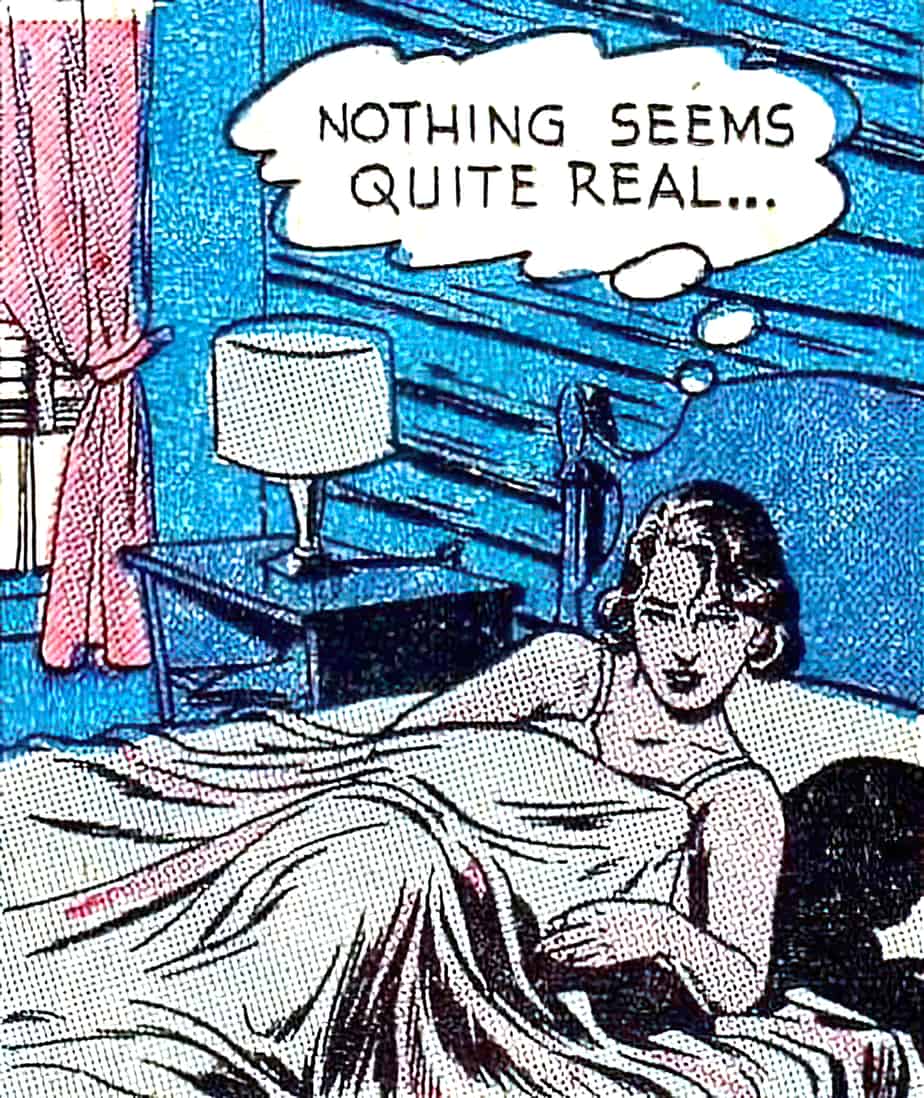
The ‘no such thing as truth’ idea is best conveyed by limiting characters’ knowledge of events in a story. Multiple viewpoints, with the distortion that comes by way of parallax, is perfect for achieving such limitation. Sometimes the multiple viewpoints of the characters contrast with the viewpoint of some unseen narrator, creating an uncomfortable juxtaposition for the reader. Who to believe? In these stories, the audience is required to contribute to the experience.
This 80s song includes Impressionist lyrics: “No one in your life is with you constantly. No one is completely on your side. … still the gap between us is too wide.” It’s interesting how often these messages are accompanied by dual storytellers, in this case singers, looking in opposite directions.
HOW TO CREATE A PARALLACTIC EFFECT IN A STORY
To summarise examples shown above:
- In picture books, or any kind of story with both text and images, create an ironic gap between the text and the images. We see this in picture books. (Especially the award winners, by the way.)
- Side-shadowing
- Multiple points of view. The writer describes the same temporal event from multiple viewpoints, sometimes alternating. These will be characters who exist within the world of the story, also known as homodiegetic.
- A fractured fairytale or re-visioned classic told from a different point of view, or with modern sensibility.
More broadly, the author uses any means necessary to create stories which overlap and intersect. Parallax is about the apparent displacement of an object. This apparent displacement can be created by shifting the reader’s ‘line of sight’, or by using techniques of reorientation. To create a parallax effect:
- Foreground your subject
- Offer various views of it
- Show the reader that all perspectives are partial and reversible
Drilling down:
- It’s important that none of these narrators is omniscient — none of them will have seen or understood the entire ‘story’. If they had, we’d just believe that character, right? Modern literature has very few examples of truly omniscient viewpoints anyhow. The limited third person voice reigns supreme, alongside first person narrative.
- You might make use of ‘narrative qualification’. Katherine Mansfield does this when using phrases such as ‘it seems’. Characters in Mansfield stories often continue believing things in the face of direct experience. Writers are often advised when starting out to cut out these ‘superfluous’ ‘hedge phrases’ but like all advice dished out to writers, as a blanket rule it doesn’t work.
- Another technique utilised by Katherine Mansfield: The narrator presents erroneous interpretations without narrative judgement. This creates narrative irony, because the audience will realise the judgement in the text is wrong. Perhaps it only gradually dawns on the reader — by means of reveal — that what is presented is not in fact what’s going on. Irony is generated by the reader’s progressive awareness that the views in the text are subjective and unreliable. If you’re a writer, you’ve probably heard to ask of your main character: What are they wrong about at the beginning? This question aims to get you to that place, leaving room for a character arc, but also leaving room for ironic gaps.
- A non-linear story is standard in this technique. Throw away a sequential timeline — it won’t be much good to you.
- Make use of Duplicative Time (the Rashomon technique)
WHAT IS DUPLICATIVE TIME IN NARRATION?
Duplicating temporal events is one way to achieve a parallactic experience for the audience. Not all parallactic narratives double back in time but many do.
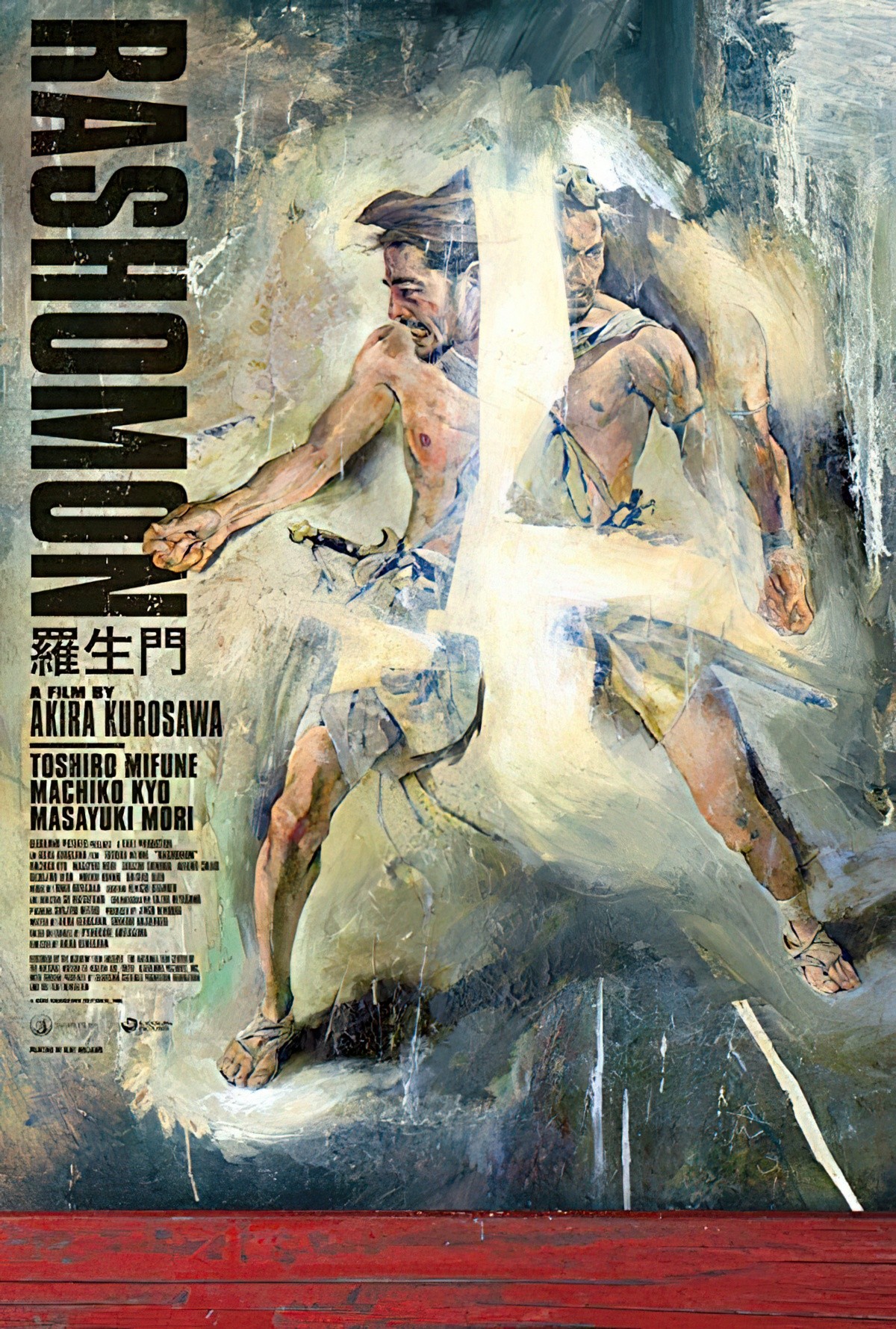
In the duplicative time technique, a story reaches backward to cover previous scenes over again. The plot shape of these stories might be described as ‘repeating’ or ‘vortex’. The classic film example is Rashomon, known for its duplicative time. The bandit, the samurai, the wife, the woodcutter and so on each provide subjective, alternative, self-serving, and contradictory versions of the same incident.
The duplicative time device allows experience to be seen from another vantage point. The reader gets two or more perceptions of the same temporal event.
WHY MAKE USE OF THE DUPLICATIVE TIME TECHNIQUE?
It’s especially useful in stories with a mystery at the heart, in which a detective is trying to get to the ‘truth’. (When writing about Impressionism, I guess ‘truth’ always has to appear in inverted commas.)
The duplicative time technique is also useful if a story includes, say, a child character and a parental figure. The writer might first describe what’s going on using the child as focaliser. Then the reader gets the story with the adult as focaliser. Since adults have more knowledge about the world, gaps can be puttied in, resulting in plot reveals. Or, the writer can subvert this expectation of childhood naïveté and create a story in which the child knows what’s going on but the adult characters don’t.
EXAMPLE OF DUPLICATIVE TIME ON TV
The Affair is a TV series which uses duplicative time to wonderful effect. The viewer is told a story about a man (Noah) who falls in love with a waitress on a family holiday to his in-laws’ house. The viewer doesn’t realise at first, but we are seeing events not through the objective lens of the camera, but filtered through Noah’s eyes. According to this view, the waitress is a seductive femme fatale. She wants him bad, so the guy thinks.
But then the viewer gets another perspective of the same temporal events, this time through the perspective of the young waitress. This time, according to her, the man is predatory. She’s not the least bit flirtatious — he is targeting her in a stalker-y kind of way. By the way, In her book Meander, Spiral Explode, Jane Alison observed that vortex plot shapes tend to feature obsessive characters.
The narrative choice is masterful because as well as questioning the nature of truth, it also conveys the idea that villains never see themselves as the villain.
An on-screen version of duplicative time can make use of many cool tools. The outtake music of the final episode of The Affair has two versions of the same song (The Whole of the Moon)
Film makers can also change the lighting.
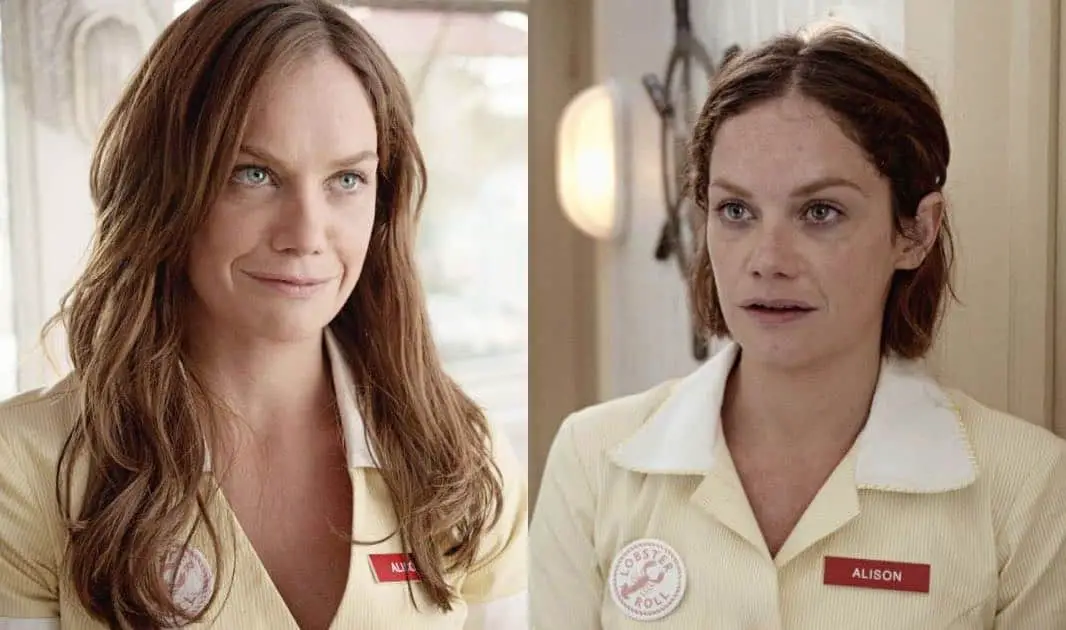
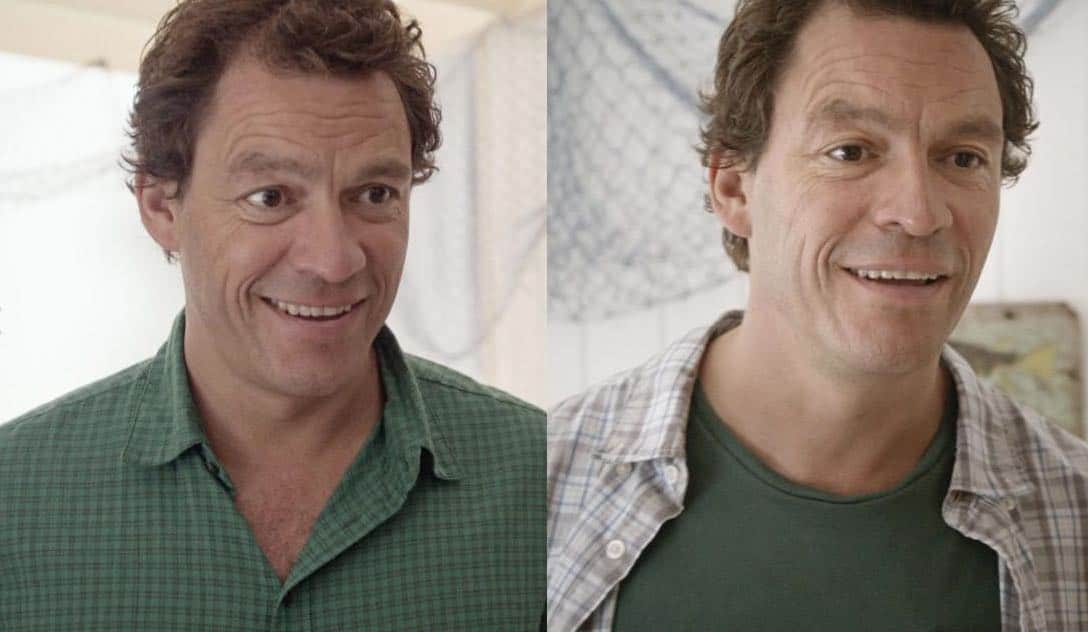
[The Affair’s] central conceit, showing events from overlapping and often contradictory perspectives, forced not only the writers but also the actors to present multiple takes on each of those issues. The hero of one segment could be the heel just a few minutes of screen time later.
NYT review
None of the characters are lying to themselves, so they’re thereby not lying to you in the audience. There’s no subterfuge from the internal perspective.
Joshua Jackson, who plays Cole Lockhart on The Affair
IN SUM: TWO MAIN TYPES OF NARRATIVE PARALLAX
I’ve listed specific writing techniques, but more broadly, there are two basic ways to get an audience to see a situation from a different perspective:
- Juxtapose two or more restricted perspectives, and the contrasting of a restricted perspective with that of an extradiegetic or omnipresent narrator.
- In a first-person perspective, show the same story recorded at different times, as for example, in Katherine Mansfield’s “Poison”. Writers sometimes use a technique called Retrospective First Person, where the main character is looking back after much reflection, treating their former selves almost as a different, more naïve character.
PARALLACTIC NARRATION AND CHARACTER LIKEABILITY
Something I’ve observed about main characters in a parallactic narrative — audiences don’t tend to find them highly likeable. Not all audiences expect likeable, but many do. The Affair is a good story well done, but has been criticised for its lack of likeable characters.
Parallactic narratives are at odds with likeable because no one in the story stands out as the ‘main’ one, and everyone is shown to be unreliable. We prefer reliable people as friends. So if you are writing a parallactic story and you really do want your characters to be liked, pull out all the tricks.
FOR FURTHER INVESTIGATION
WHO CAN YOU TRUST?: On The Parallax View (1974), The Three Days of the Condor (1975), and All The President’s Men (1976)
Can you imagine living in a society that is ostensibly a democracy but secret forces are working behind the scenes to manipulate events? What if our intelligence agencies run amok with no oversight? What if the president is a criminal and would do anything to stay in power? These sound like current events, but they were major preoccupations during the 1970s in the wake of Watergate and congressional hearings about CIA and FBI abuses. Hollywood responded by dramatizing the unfettered power of what some like to call “the deep state” in three films we cover this episode – The Parallax View (1974), The Three Days of the Condor (1975), and All The President’s Men (1976). Each features protagonists unraveling conspiracies at the heart of our national security state, but is exposing the truth enough?
interview at New Books Network
